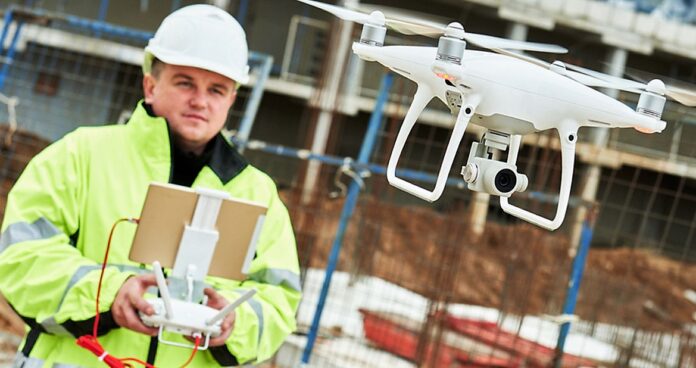The Multitude of Advantages Unmanned Aerial Vehicles Offer for Construction Firms
Construction firms are embracing the adoption of unmanned aerial vehicles (UAVs), more commonly known as drones, to acquire photos and data from construction sites. These UAVs come equipped with high-speed HD cameras and sensors such as LiDAR and laser scanning, which allow them to capture aerial imaging that can be used to create detailed maps and 3D models of construction sites. UAVs can either operate autonomously or be flown manually using a remote control or smartphone. UAVs offer an affordable alternative to traditional airplane or helicopter services for aerial imagery and can be used to map sites, perform building inspections, and monitor jobsite safety. The footage captured by UAVs can be used to create 3D images of construction progress and streamline project management to help ensure projects remain on schedule.
The Impact of UAVs on Worker Safety and Productivity
The integration of UAVs into the construction industry can significantly improve worker safety and productivity. However, concerns surrounding privacy may cause pushback from workers. Nevertheless, safety managers are already closely monitoring construction sites, and UAVs can survey entire sites within a fraction of the time it would take for an individual to do so. UAVs can be employed to identify ways to improve worker productivity, and fitted with tablets for video-conferencing to improve communication on the jobsite. Moreover, after working hours, surveillance UAVs could be deployed to monitor sites for trespassers and thieves, bolstering site security.
The Potential of UAVs in the Construction Industry
Construction firms, UAV manufacturers, and universities are continuously researching innovative ways UAVs can serve the industry, such as performing physical work like welding, and conducting inspections of bridges and roofs. Companies such as Krespy, Precision Drone, Phoenix Aerial Systems, Topcon, and Trimble are developing UAV systems for commercial use in the construction sector. Skycatch has collaborated with construction firms to develop UAVs tailored for the construction industry and is partnering with Autodesk to incorporate their software to utilize data collected by Skycatch’s UAVs.
The Legalities Surrounding UAV Use in the Construction Industry
Currently, operating UAVs for commercial purposes is not legal without exemption under Section 333 of the FAA Modernization and Reform Act of 2012. The Federal Aviation Administration (FAA) has proposed rules for commercial use of UAVs, including a weight limit of 55 lbs., maintaining a visual line-of-sight without assistance, a maximum airspeed of 100 mph, and a maximum altitude of 500 feet. Operators must pass an aeronautical knowledge test and acquire an operator certificate. UAVs must be registered and display identification markings. Final rules for commercial use of UAVs are expected to be published this year.
The Bottom Line
The utilization of UAVs in the construction industry is rapidly expanding, and their benefits include cost savings, improved safety, and increased productivity. Although privacy concerns may arise, the industry is exploring innovative ways UAVs can serve the construction sector. Nevertheless, legal issues concerning UAV use must be resolved before construction firms can incorporate them for commercial purposes.















